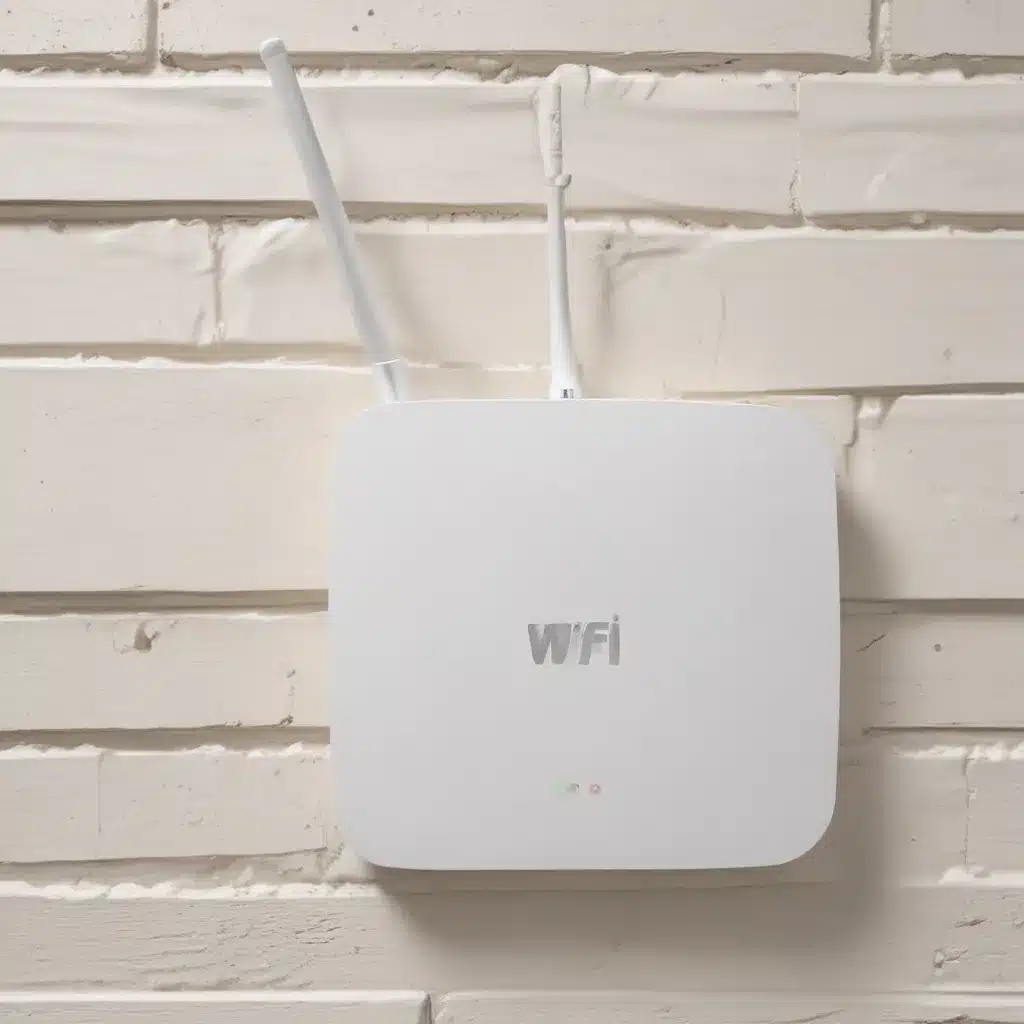Taming the Airwaves: Unlocking Blazing-Fast Wi-Fi
Have you ever found yourself in a frustrating game of Wi-Fi roulette, where your internet connection bounces between lightning-fast and molasses-slow? If so, you’re not alone. Navigating the crowded airwaves of modern wireless networks can feel like a never-ending battle. But fear not, my tech-savvy friends – I’m here to share the secrets of Wi-Fi channel optimization and help you conquer the connectivity chaos once and for all.
Understanding the Wi-Fi Frequency Bands
Before we dive into the nitty-gritty of channel selection, let’s first explore the different frequency bands that your trusty router uses to beam those precious data packets into your devices. [1] We’re talking about the 2.4 GHz, 5 GHz, and the newer 6 GHz bands.
Now, the 2.4 GHz band may have the longest range, but it’s also the most congested. Imagine trying to have a conversation in a crowded room – it’s just not going to be as clear or as fast as you’d like. [2] On the other hand, the 5 GHz band offers faster speeds, but its shorter wavelengths struggle to punch through walls and obstacles. [3]
And then there’s the 6 GHz band, the newcomer on the block. This frequency superhighway is currently the least crowded, making it an ideal choice for blazing-fast internet and seamless streaming. [1] But before you go racing to the 6 GHz promised land, remember that not all devices are compatible, so you’ll need to check your gear.
Navigating the Channel Maze
Alright, let’s dive into the complex world of Wi-Fi channels. Each frequency band is divided into a series of these invisible “lanes,” and your router has to pick the best one to avoid interference from your neighbors’ networks. [3]
On the 2.4 GHz band, the channels you’ll want to focus on are 1, 6, and 11. These are the only ones that don’t overlap, so they’re your best bet for avoiding congestion. [4] But here’s the catch – modern routers don’t always play by the rules. They might just pick the “best” channel available, even if it’s not one of those sacred trio.
The 5 GHz band, on the other hand, has a much wider spectrum to play with. You’ve got 30 channels to choose from, but watch out – some of them are also used by radar systems, which can cause your router to scramble. [3] The sweet spots here are the lower channels (36, 40, 44, and 48) and the upper channels (149, 153, 157, and 161).
And let’s not forget about that shiny new 6 GHz band. While the channel selection process is still a bit of a mystery, the folks at NETGEAR suggest giving channels 65, 69, 73, and 77 a try. [1] With 59 channels to choose from, you’re bound to find a clear path through the airwaves.
Putting Theory into Practice
Alright, now that you’ve got the lowdown on Wi-Fi frequencies and channels, it’s time to put this knowledge into action. Grab your smartphone or laptop and download a trusty Wi-Fi analyzer app. [3] These nifty tools will show you a real-time map of the wireless landscape around your home or office, complete with signal strength and channel occupancy.
As you scan the airwaves, look for channels that are less congested, and make a mental note of them. Then, log into your router’s settings and see if you can manually select one of those clear channels. [3] Depending on your router’s manufacturer, the process might involve a bit of hunting around in the menus, but it’s worth the effort.
Now, I know what you’re thinking – “But what about my router’s ‘Auto’ channel selection? Isn’t that supposed to handle all of this for me?” Well, let me tell you, sometimes those built-in algorithms don’t always get it right. [3] The only way to be sure you’re getting the best possible performance is to take the reins and choose your own channel.
Seeing the Light at the End of the Tunnel
After you’ve made the switch to your new, interference-free channel, it’s time to put your Wi-Fi to the test. Run a quick speed test and see if you notice a difference. [3] If all goes well, you should be enjoying blazing-fast downloads, silky-smooth video streaming, and no more frustrating lag spikes.
But what if the magic doesn’t happen? Don’t worry, there are a few other factors that could be holding your Wi-Fi back, like a slow internet plan or router placement. [5] Give those a once-over, and if you’re still not seeing the results you want, it might be time to consider an upgrade.
Remember, the world of wireless networking is constantly evolving, and the battle to maintain a lightning-fast connection is an ongoing one. But with the right knowledge and a little bit of elbow grease, you can tame those airwaves and keep your devices humming along at their full potential. Happy channel surfing, my friends!
[1] Knowledge from https://www.intel.com/content/www/us/en/support/articles/000058989/wireless/intel-killer-wi-fi-products.html
[2] Knowledge from https://www.highspeedinternet.com/resources/how-to-find-the-best-wifi-channels-for-your-router
[3] Knowledge from https://www.extremetech.com/internet/179344-how-to-boost-your-wifi-speed-by-choosing-the-right-channel
[4] Knowledge from https://www.howtogeek.com/197268/how-to-find-the-best-wi-fi-channel-for-your-router-on-any-operating-system/
[5] Knowledge from https://broadbandnow.com/guides/how-to-boost-wifi-signal
[6] Knowledge from https://www.axiros.com/knowledge-base/wifi-optimization
[7] Knowledge from https://communityforums.rogers.com/t5/Internet/Edit-WI-FI-Configuration-on-Ignite-Router/td-p/480107
[8] Knowledge from https://www.metageek.com/training/resources/why-channels-1-6-11/













